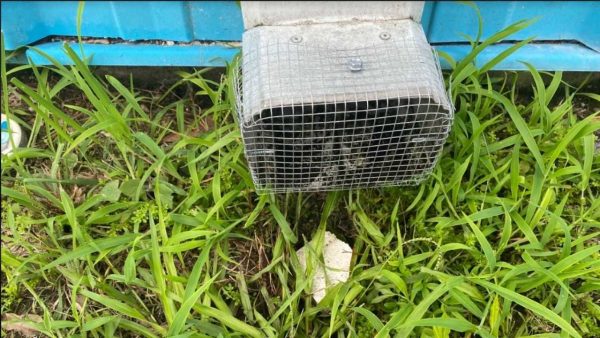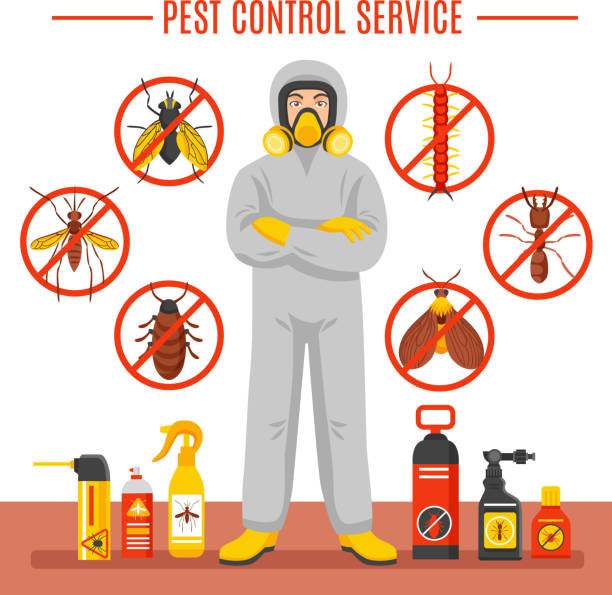Safe Residential Pest Control Service in Port Charlotte
Safe Residential Pest Control Service in Port Charlotte
Blog Article
Comprehensive Overview to Recognizing Parasite Control Methods and Their Therapy
Comprehending bug control approaches is essential for reliable management of undesirable organisms that position threats to wellness, agriculture, and residential property. This detailed overview will certainly discover numerous approaches, consisting of chemical solutions, biological methods, and mechanical approaches, all under the umbrella of Integrated Bug Management (IPM) As we take a look at these methods, it ends up being increasingly clear that the selection of approach can substantially affect both human interests and eco-friendly equilibrium. What aspects should be considered when choosing the proper insect control approach for a particular situation? The solution might bring about even more sustainable practices than one might initially assume.
Review of Parasite Control Methods
Bug control methods incorporate a range of methods created to take care of and remove undesirable microorganisms that can damage human health, farming, and home. Reliable bug management is crucial for keeping the integrity of ecological communities and making certain the security of food products. These methods can be generally categorized into three primary methods: cultural, mechanical, and biological controls.

Cultural control involves changing farming techniques or ecological problems to lower parasite facility and recreation. Mechanical control relies on physical barriers or devices to stop pest accessibility or directly eliminate them.
Biological control uses natural predators, bloodsuckers, or virus to regulate pest populations. This method highlights environmental equilibrium and can include presenting beneficial insects, such as ladybugs or predative nematodes, to handle insect presence.
Integrated parasite administration (IPM) integrates these techniques, utilizing a holistic strategy that stresses prevention, tracking, and liable administration. By employing a mix of these approaches, bug control can be a lot more sustainable and reliable, decreasing dependence on chemical interventions while safeguarding human wellness and the environment.

Chemical Bug Control Solutions
A variety of chemical parasite control solutions are offered, providing efficient choices for handling parasite populations when other approaches may fall short. These remedies mainly consist of pesticides, herbicides, fungicides, and rodenticides, each developed to target details insects while minimizing damage to non-target microorganisms.
Pesticides are especially reliable versus a variety of bugs, consisting of ants, cockroaches, and termites, and can be classified as get in touch with or systemic representatives. Contact pesticides eliminate pests on contact, while systemic pesticides are absorbed by plants, making them poisonous to insects that feed on them. Herbicides are made use of to regulate undesirable vegetation, whereas fungicides are necessary for taking care of fungal diseases that can damage plants and decorative plants.
In addition, incorporated bug administration (IPM) principles ought to be utilized, integrating chemical options with social, mechanical, and biological techniques for lasting bug control. This alternative technique not only enhances pest monitoring performance however likewise lowers potential environmental effects connected with chemical use.
Biological Insect Control Methods
Biological pest control techniques supply an eco friendly look at this web-site choice to chemical methods by utilizing all-natural killers, parasites, or microorganisms to manage parasite populations. This approach leverages the environmental connections between organisms, advertising a well balanced ecological community while minimizing chemical deposit in the environment.
Among the most typical biological control methods entails the intro of all-natural adversaries. Ladybugs are employed to control aphid populaces, while parasitical wasps can target caterpillars and various other parasites. These all-natural killers properly reduce pest numbers without hurting advantageous bugs.
In addition, microbial agents such as germs, fungis, and infections are used to infect and eliminate particular pests. Bacillus thuringiensis (Bt), a normally occurring bacterium, is extensively used to control caterpillars and other larvae, showcasing the effectiveness of microbial bug control.

Physical and Mechanical Techniques
Frequently employed in incorporated bug administration techniques, physical and mechanical techniques function as effective devices for regulating pest populations without making use of chemicals. These techniques depend on physical obstacles, catches, and various other mechanical gadgets to stop or eliminate parasites, making them eco-friendly choices.
Physical techniques include using obstacles such as insect netting, screens, or row covers that literally obstruct bugs from accessing plants. This is particularly useful in farming setups where plant defense is vital. In addition, environment adjustment, such as eliminating debris and standing water, can minimize insect reproducing websites, thus decreasing infestations.
Mechanical techniques encompass catches, which can be made to capture certain insects. Sticky traps and pheromone catches prevail instances that draw and keep bugs, promoting tracking and control. Vacuuming is an additional mechanical approach, efficient for eliminating parasites from indoor atmospheres, specifically in cases of invasions.
Preventative Parasite Management Methods
Effective preventative parasite management methods are important for keeping healthy and balanced atmospheres and decreasing pest-related problems prior to they develop (Pest Control in Port Charlotte, FL). These techniques focus on aggressive steps that lower the possibility of parasite invasions why not try this out by addressing the source

An additional essential strategy involves appropriate landscaping methods (Pest Control in Port Charlotte, FL). Maintaining greenery cut and away from structures can lower harborage areas for pests. In a similar way, carrying out incorporated pest management (IPM) methods that include monitoring bug populations and using biological controls can foster a well balanced ecosystem that normally subdues pest numbers.
Education and training for personnel and homeowners on recognizing very early signs of parasite activity are also vital components of a reliable preventative program. By promoting a setting of awareness and watchfulness, organizations and home owners can greatly improve their insect monitoring efforts and secure their rooms versus future problems.
Conclusion
Utilizing an Integrated Insect Monitoring (IPM) structure allows for the sustainable monitoring of pests while decreasing eco-friendly effect. Ultimately, a comprehensive understanding of these diverse bug control methods is vital for achieving effective results in pest administration efforts.
Report this page